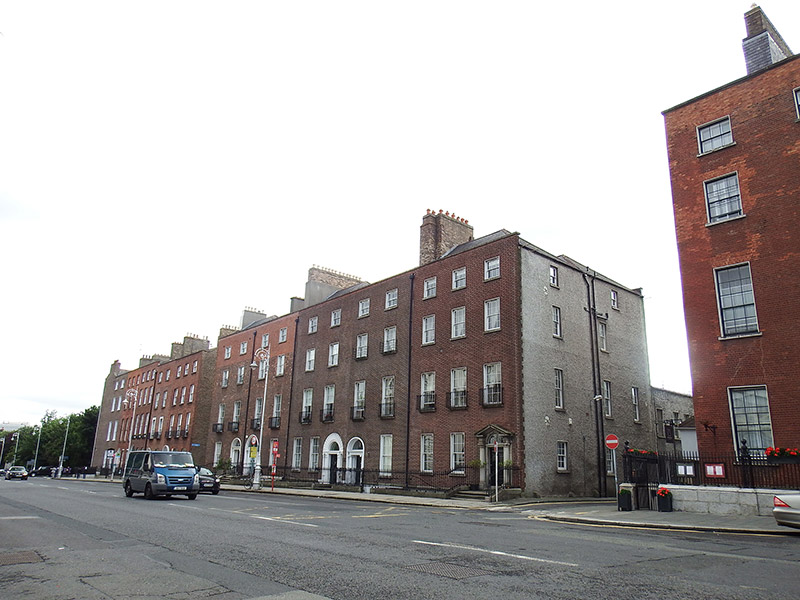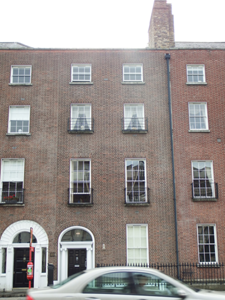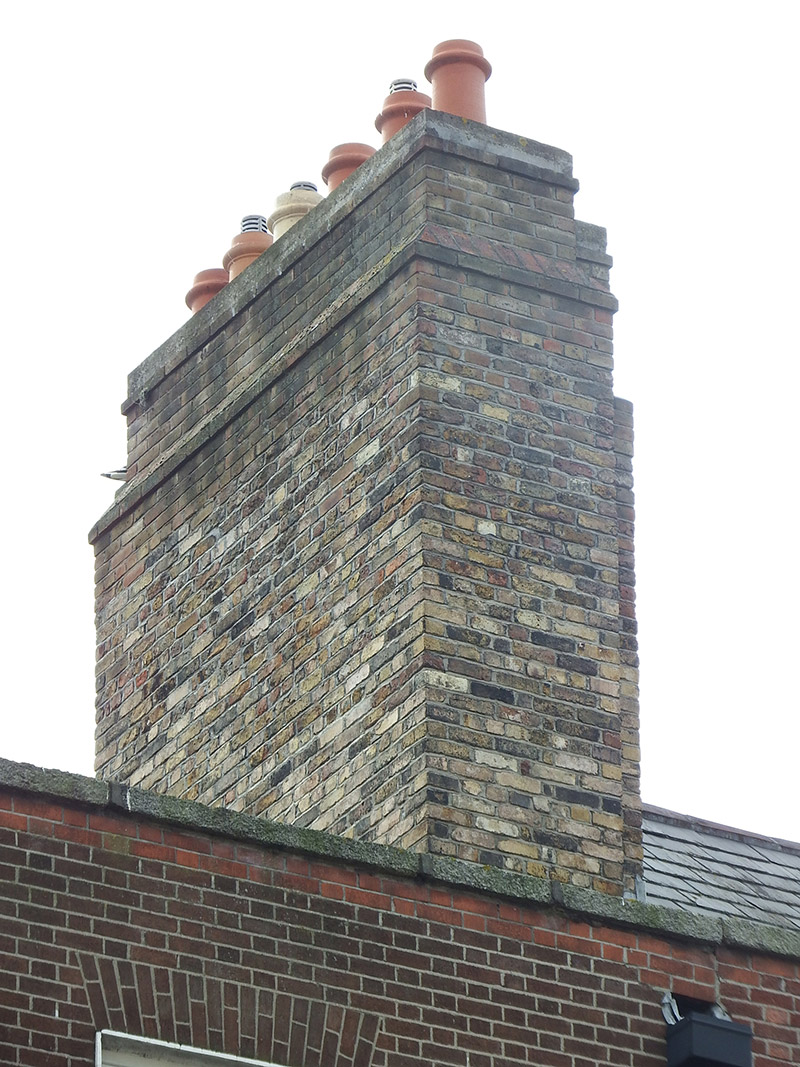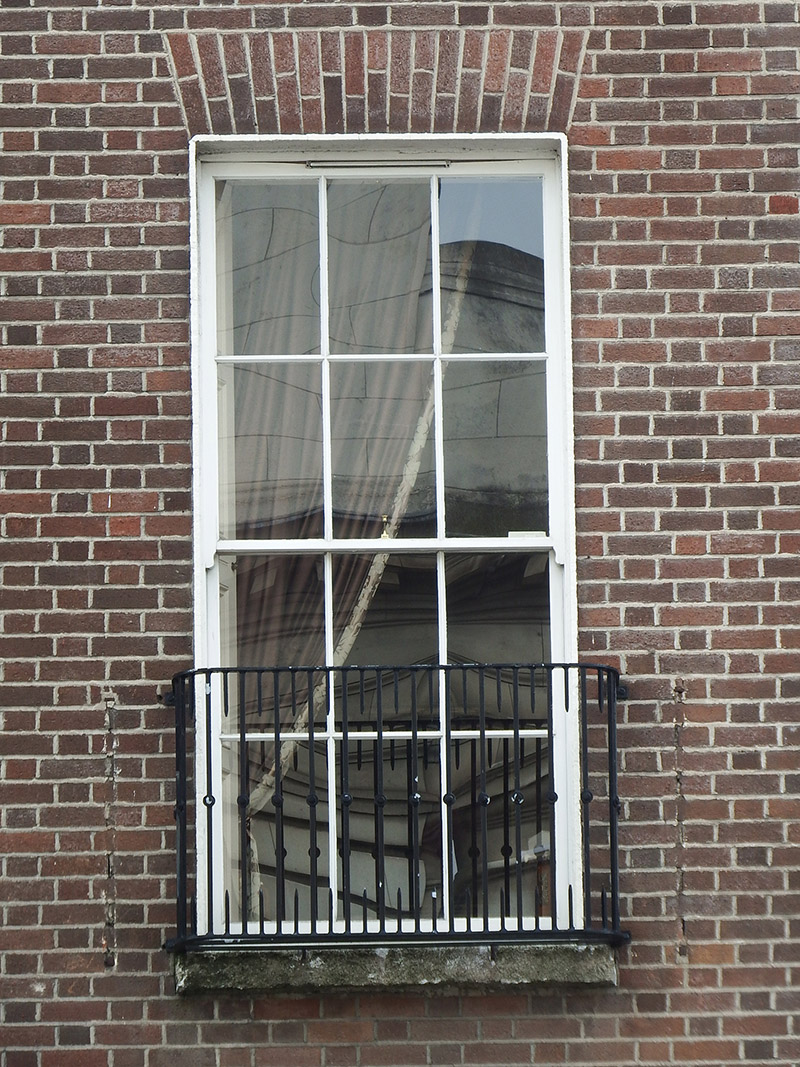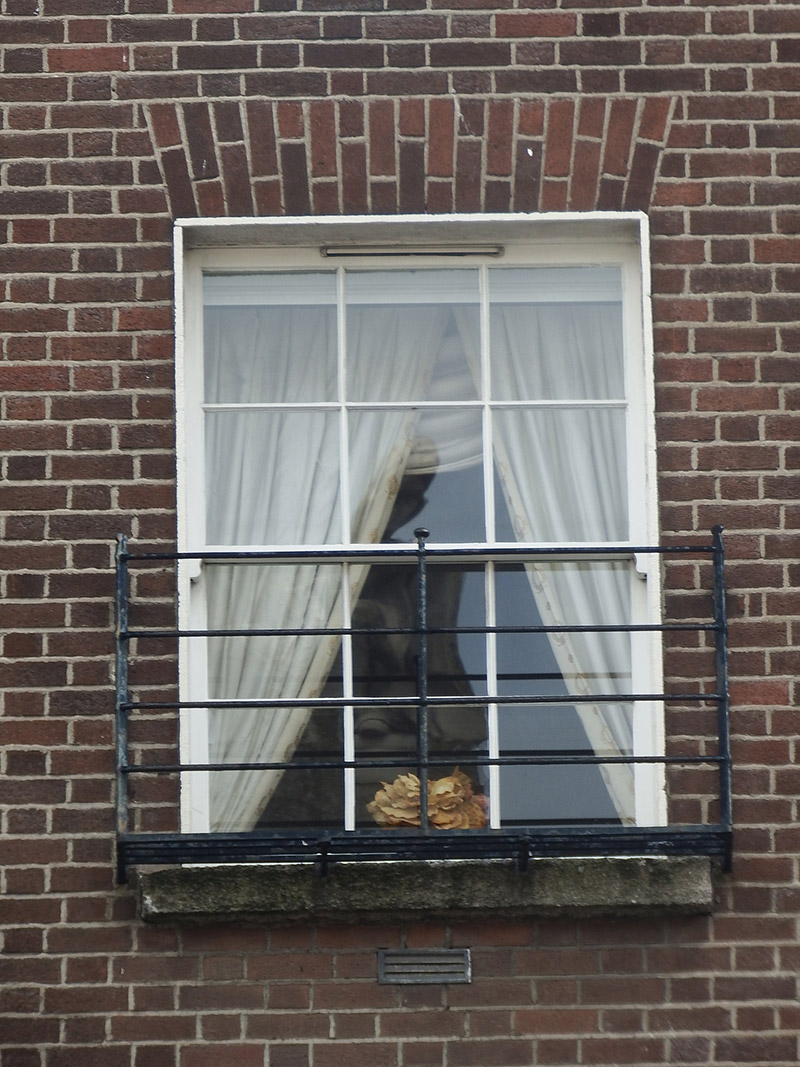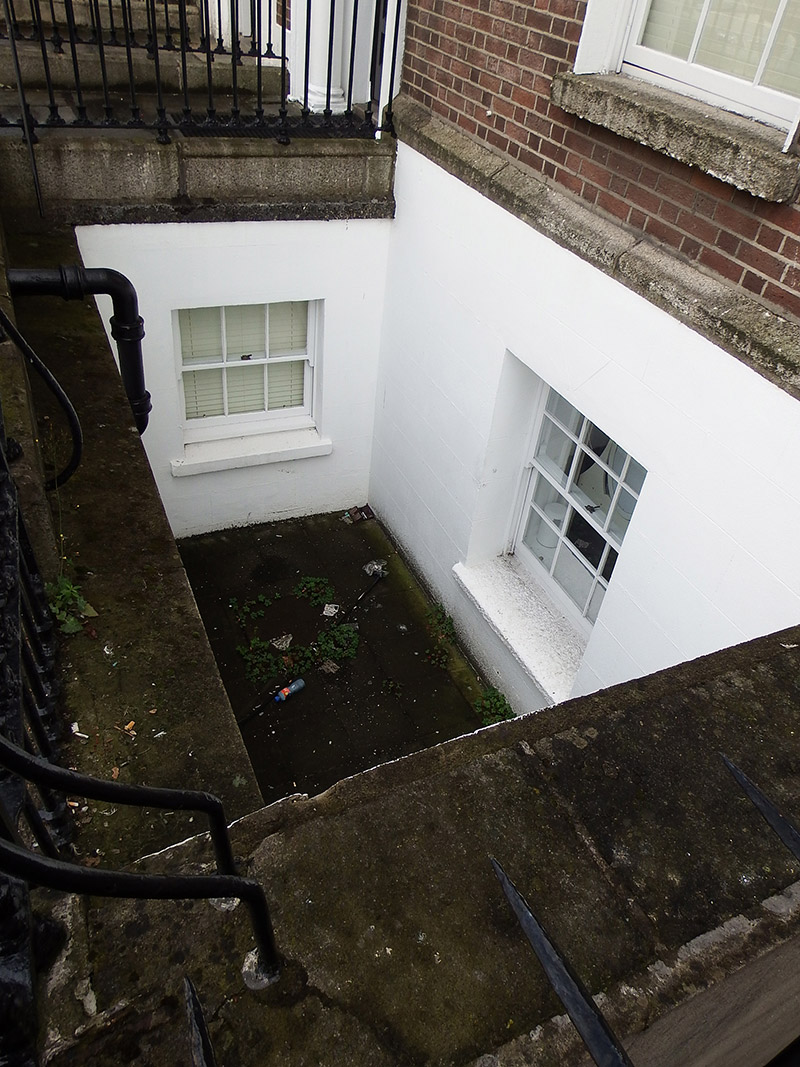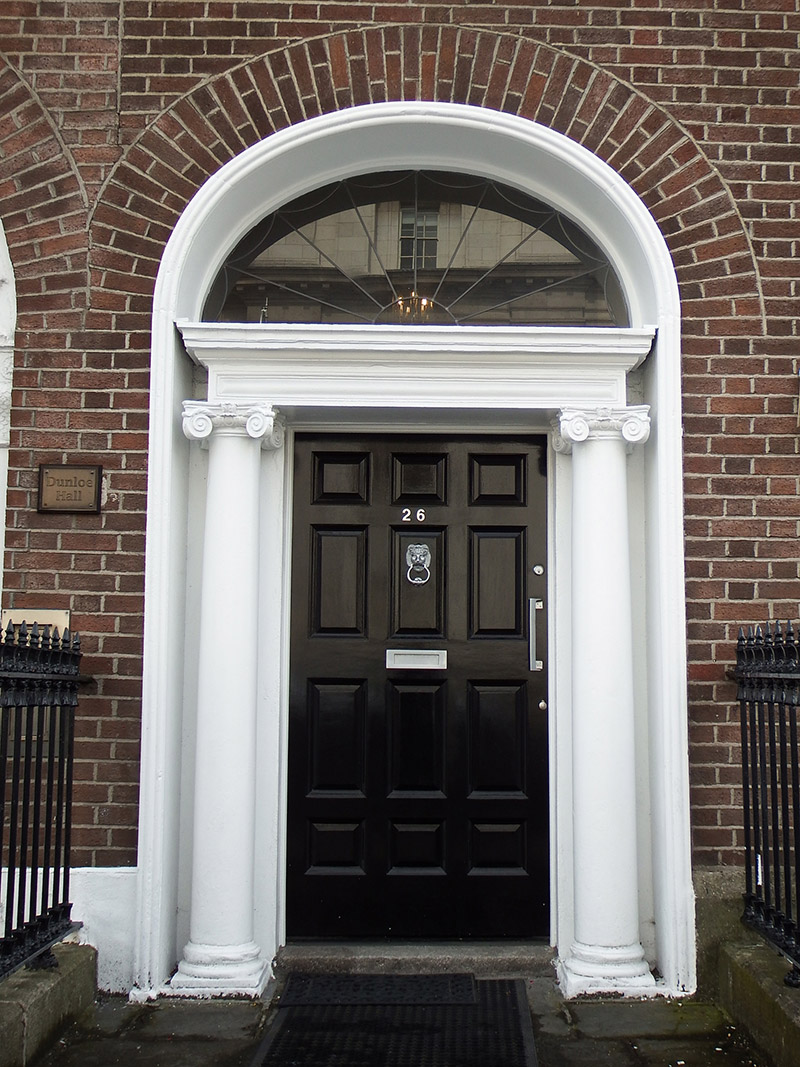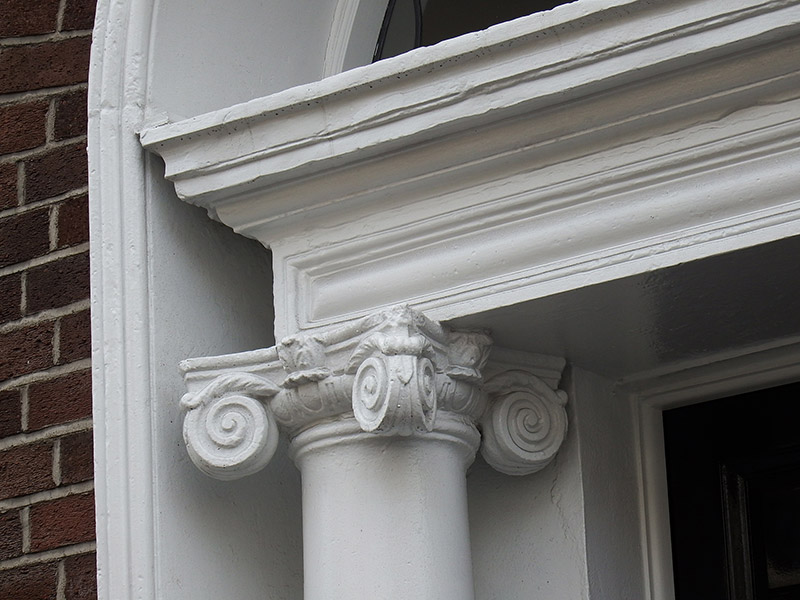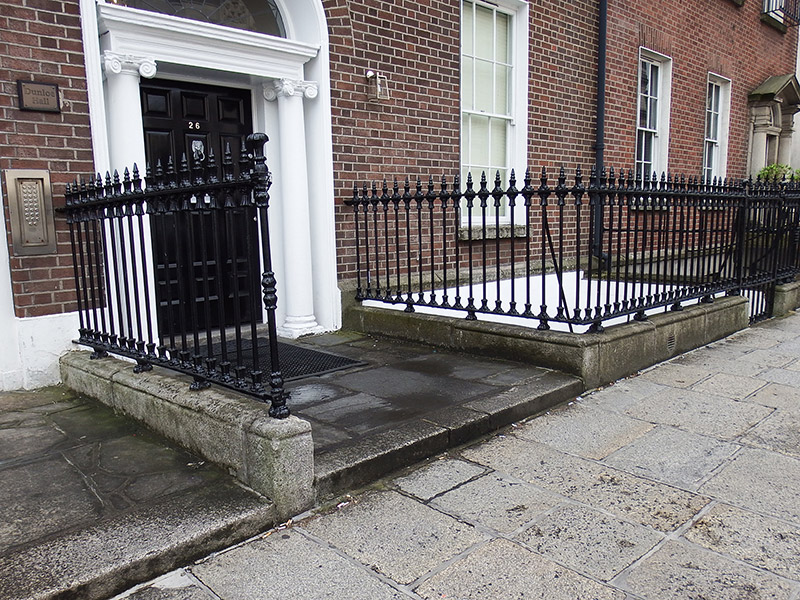Survey Data
Reg No
50100443
Rating
Regional
Categories of Special Interest
Architectural
Original Use
House
In Use As
Apartment/flat (converted)
Date
1770 - 1790
Coordinates
316453, 233478
Date Recorded
28/07/2016
Date Updated
--/--/--
Description
Attached two-bay four-storey former house over basement, built c. 1780. Remodelled as apartments c. 1995 as part of group (Nos. 25-29). Hipped slate roof, perpendicular to street, behind rebuilt parapet with granite coping. Yellow brick chimneystacks to party wall to south with replacement terracotta pots; parapet gutters and shared replacement aluminium downpipes. Refaced Flemish bond brown brick walling to front elevation on masonry plinth course over painted ruled-and-lined rendered basement walls; rendered walls to rear elevation. Square-headed window openings, diminishing in height to upper floors, with painted rendered reveals and granite sills, and with plain rendered surrounds to basement. Replacement timber sliding sash windows with vents and profiled horns, three-over-three pane to top floor and to basement beneath entrance platform, and six-over-six pane elsewhere. Front elevation has steel balconettes to first floor and wrought-iron window-guards to second floor. Elliptical-headed principal doorcase with moulded reveals, painted masonry doorcase, freestanding columns with Scamozzian Ionic capitals, panelled frieze, moulded cornice, replacement leaded batwing fanlight and replacement panelled timber door with recent chrome furniture. Limestone-paved entrance platform with single granite step to street. Basement area enclosed by cast-iron railings with decorative finials and corner posts on moulded granite plinth. Large single-storey building to rear of plot to Nos. 25-26.
Appraisal
A late eighteenth-century Georgian house, remodelled as apartments, c. 1995, as part of a group comprising Nos. 25-29. The doorway of No. 27 is now the main entrance to the complex. Internal arrangement has been reconfigured throughout. As a result of the refurbishment works, the exterior of No. 26 has also been subject to alterations, with some loss of original detailing and historic fabric. However, the overall appearance is retained and displays elegant proportions, good setting features and a trabeated doorcase that features Scamozzian Ionic capitals. Construction of Merrion Street began in the early 1750s, following the completion of Kildare (now Leinster) House. In 1762, when Merrion Square was laid out, the middle portion of the street became the west side of the square. Despite the alterations in recent decades, No. 26 makes an important contribution to the early streetscape character and architectural quality of the south city Georgian core, which is fairly well-retained along this stretch of Merrion Street Upper.
